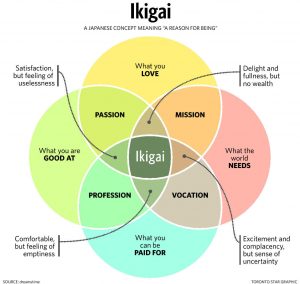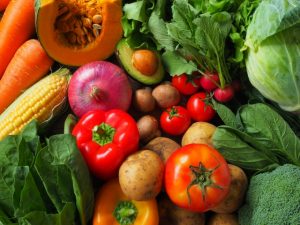What Were the People in Short-Lived Villages Eating?
There was an interesting study done by a doctor in Japan. Dr. Shoji Kondo, the author of Nihon No Chojumura Tanmeimura, Long-Lived Villages and Short-Lived Villages in Japan, spent 36 years traveling around the island, between 1935 and 1971, visiting 990 villages and towns to investigate the diets of each place. He discovered that there were villages where many residents lived long and villages where many residents didn’t live long. He found out that there was a distinct difference between the diets of long-lived villages and short-lived villages.
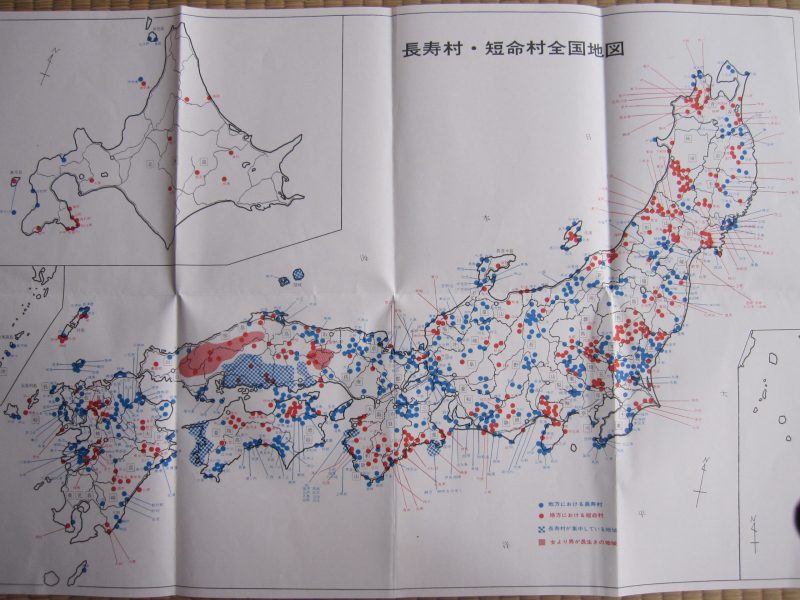
The blue spots are long-lived villages and the red spots are short-lived villages; both of them are everywhere in Japan.
So, what was the difference between the diets of long-lived villages and short-lived villages?
Today, I would like to share with you what the people in short-lived villages were eating.
It is quite surprising, actually.
They weren’t eating hamburgers, fried chickens, and beef bowls, which were the foods I criticized in my e-book version of Ikigai Diet since they were popular among young Japanese people.
They weren’t eating non-organic foods, which were the foods I criticized in my e-book version of Ikigai Diet since they were commonly eaten among most Japanese people including elderlies.
In other words, the people in short-lived villages were eating organic food. Well, it was between 1935 and 1971, most people in Japan were eating organic food.
In that case, what kind of junk could they be eating to make them short-lived?
Well, they were eating the Japanese staple food.
Yes, rice was the villain.
Rice, which is the central figure in Washoku, which is supposed to be healthy.
Well, they were eating white rice, not brown rice. Therefore precisely speaking, white rice is the source of evil.
Yet, it is still shocking to most Japanese since rice means white rice in Washoku.
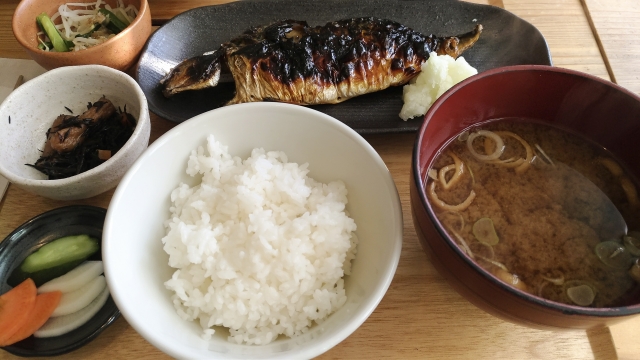

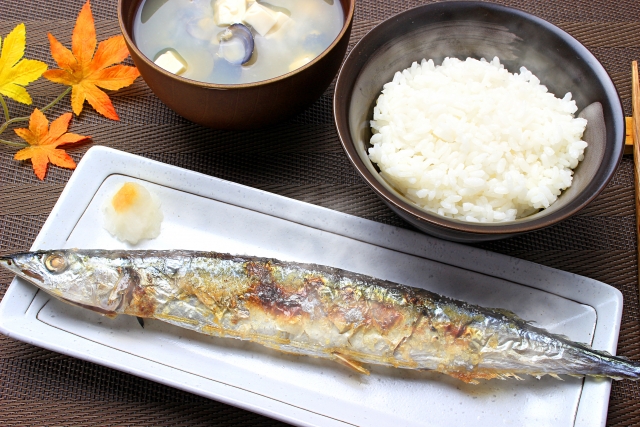
White rice is everywhere in Japanese cooking.
This is another misconception people in the West might have about the Japanese that we eat brown rice, thanks to the spread of the macrobiotic diet.
No, we don’t. Most Japanese people eat white rice, even in Koyasan, they serve white rice.
The problem is, many people still believe that rice is good for you and for them, rice means white rice. Even in our town, there was a movement to bring rice back to our table since many people started eating things like bread and noodles. They managed to bring back rice to school lunch, but it is white rice. Maybe it is better than bread because bread is made from American wheat which probably contains glyphosate, and rice is locally grown.
Anyway, according to Dr. Kondo’s research, the people in short-lived villages were eating a lot of white rice without exception. He has visited 990 small villages and towns in Japan, and that was his conclusion. White rice was the biggest cause of their short-life.
Mind you, it doesn’t mean Washoku is bad, the photos of Washoku I showed you above wouldn’t probably make you live short because that was not what the people in short-lived villages were eating either. They were eating 4 to 7 bowls of white rice with a little salty pickles, or they were eating a lot of white rice with pickles and fish. They weren’t eating vegetables or seaweeds. Many of the short-lived villages didn’t have vegetable gardens and they only ate rice. Among the fishing villages, the villages which didn’t grow vegetables were short-lived, and the villages which didn’t catch seaweed were also short-lived.
Washoku today is closer to the diets of long-lived villages, except they didn’t eat white rice in long-lived villages.
In that case, what were they eating instead of white rice?
That is something I am going to discuss in the next post.
The Ikigai Diet: The Secret Japanese Diet to Health and Longevity
POD Paperback
https://www.amazon.com/gp/product/4991064864
Kindle
